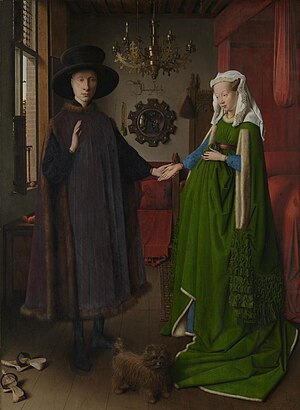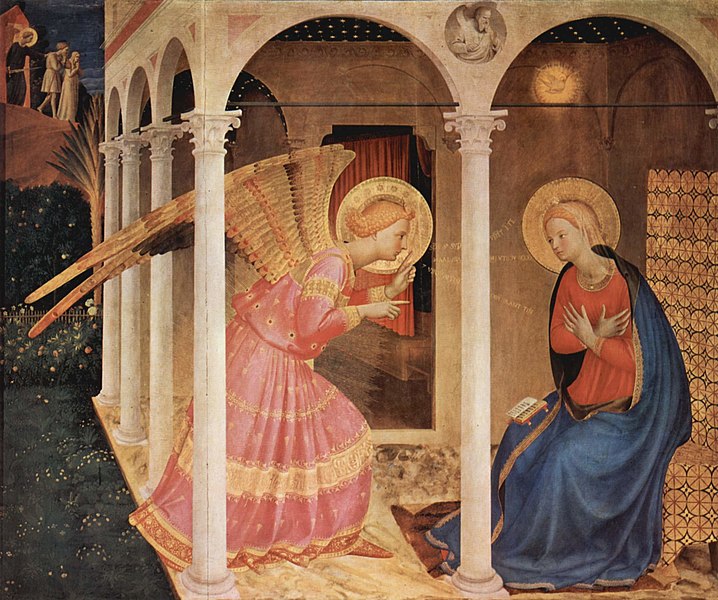All AP Art History Resources
Example Questions
Example Question #54 : Renaissance To Contemporary 2 D Art
The artist who created the famous painting of Holy Roman Emperor Charles V on horseback was __________.
Titian
Sandro Botticelli
Hans Holbein
Diego Velázquez
Titian
After the Battle of Muhlberg in 1547, the Holy Roman Emperor Charles V had a portrait commissioned to celebrate his victory. He specifically called on the Italian artist Titian, who created a portrait that was a model of Renaissance portraiture. Titian shows a realistic looking Emperor bestride a massive horse, with allusions to mythology, Roman art, and Charles' own history.
Example Question #55 : Renaissance To Contemporary 2 D Art
The early Renaissance painter of the massive allegorical painting "The Garden of Earthly Delights" was __________.
Hans Holbein
Hieronymus Bosch
Titian
Sandro Botticelli
Hieronymus Bosch
The Dutch painter Hieronymus Bosch took many of the conventions of Medieval art and turned them on their heads. His "Garden of Earthly Delights" is a triptych altarpiece depicting religious themes and is meant as instruction in religious belief. It also, however, features odd figures and a massive scale with unique perspectives that helped kick off many features of Renaissance art.
Example Question #125 : 2 D Art
The German painter who made portraits of early Protestant reformers and altarpieces for Lutheran churches was __________.
Hans Holbein the Younger
Albrecht Durer
Peter Brueghel the Elder
Lucas Cranach the Elder
Lucas Cranach the Elder
Lucas Cranach the Elder played an important role in the Protestant Reformation: not only did he paint portraits of leading German reformers like Martin Luther and Philip Melanchthon, but he also made altarpieces and devotional pieces that conformed to Lutheran precepts. Cranach's use of realistic drawings and perspective owed a debt to the Italian renaissance, but his use of symbolism and plain depictions were largely due to the influence of the Protestant Reformation.
Example Question #58 : Renaissance To Contemporary 2 D Art
Portraiture done in three-dimensional settings, with props and furniture, was a signature element of the work of the sixteenth-century artist __________.
Hans Holbein the Younger
Nicholas Hilliard
Lucas Cranach the Younger
Peter Bruegher the Elder
Hans Holbein the Younger
Hans Holbein the Younger had a strange relationship to other early Renaissance painters. Famous for his portraits of the court of King Henry VIII of England, Holbein crafted realistic portraits of his subjects using perspective and other techniques borrowed from Italian Renaissance painters. Nonetheless, his symbolism and allegory contained in settings and props for his portraits called back to Gothic styles.
Example Question #56 : Renaissance To Contemporary 2 D Art

Figure 1

Figure 2
Each of these paintings would have a direct influence on __________.
neo-classicism
Norman artwork
the Italian Renaissance
Catholic hagiography
the Italian Renaissance
Both Jan van Eyck and Rogier van der Weyden are part of what is now known as early Netherlandish painting. This largely fifteenth-century school of painting introduced a few key techniques and styles, such as oil painting and approaches to perspective, that were highly influential. In particular, many artists in the early Italian Renaissance were directly influenced by early Netherlandish painting.
Example Question #131 : Ap Art History
The painting shown in Figure 3 is an example of __________.
Baroque painting
Medieval painting
Mannerist painting
Renaissance painting
Medieval painting
Fra Angelico is considered one of the masters of devotional art from the Middle Ages. This painting, depicting an important scene from the Bible, exhibits many of the key features of such art. Both the angel and Mary have halos around their heads and are placed in a flat space, and important symbolism is used.
Figure 3: The Annunciation (Cortona) by Fra Angelico (1433)
Figure 4: Supper at Emmaus (Milan) by Caravaggio (1606)
Example Question #62 : Fourteenth Through Sixteenth Century 2 D Art
The wall fresco behind the altar of the Sistine Chapel in Rome known as The Last Judgement was painted by __________.
Leonardo da Vinci
Titian
Sandro Botticelli
Michelangelo
Michelangelo
The Last Judgement takes up the entire altar wall in the Sistine Chapel with a scene depicting human souls being judged by Christ while surrounded by a number of saints. Michelangelo's masterful composition and stunning portraiture make this painting one of his masterpieces, along with the painting of the ceiling of the Sistine Chapel. The painting has not been without controversy, however, as Michelangelo depicted the souls in judgement as nudes, which both showed them as equals and violated decorum.
Example Question #132 : Ap Art History
The Catholic saint often portrayed in art with simple robes and accompanied by birds is __________.
Pope Saint Pius V
Saint Ignatius of Loyola
Saint Francis of Assisi
Saint Patrick of Ireland
Saint Francis of Assisi
Francis of Assisi was a minor Italian nobleman of the late twelfth and early thirteenth centuries who took a vow of asceticism and became influential as a monastic reformer and the founder of the Franciscan Order. Francis of Assisi became hugely popular in the Counter Reformation and therefore in Baroque art. Francis of Assisi can be identified in art by his plain brown robes and the birds and animals that usually are flocking around him.
Example Question #61 : Fourteenth Through Sixteenth Century 2 D Art

Pictured above is the Arnolfini Portrait, and can be found at the Website of National Gallery, London.
In commemoration of what event was this portrait painted?
The birth of a noble child
The death of a family member
A Danish festival
A wedding
A court event
A wedding
The joining of their hands, the headdress the woman wears and the position of the woman nearer to the bed are all symbolic of a union of marriage between these two people.
Example Question #134 : Ap Art History
Which painter created the portrait of Holy Roman Emperor Charles V on horseback that commemorated the Imperial victory at the Battle of Mühlberg?
Peter Breughel
Michelangelo
Titian
Caravaggio
Titian
The Equestrian Portrait of Charles V, which includes the actual horse and armor the Emperor used at Mühlberg, is one of Titian's most famous and significant works. The painting combined a realistic foreground of the emperor and his horse with a more airy background, while containing little of the symbolic elements typical of paintings of the era. Titian's painting became a template for many later portraits of monarchs in equestrian poses.
Certified Tutor
Certified Tutor
All AP Art History Resources





